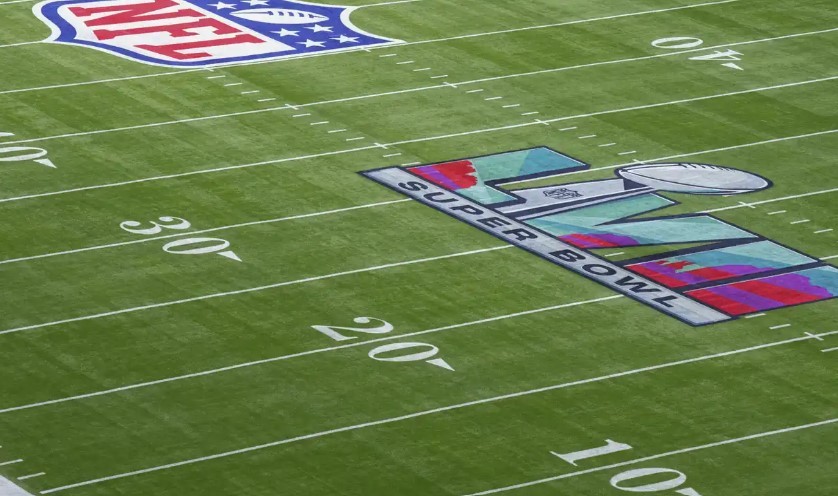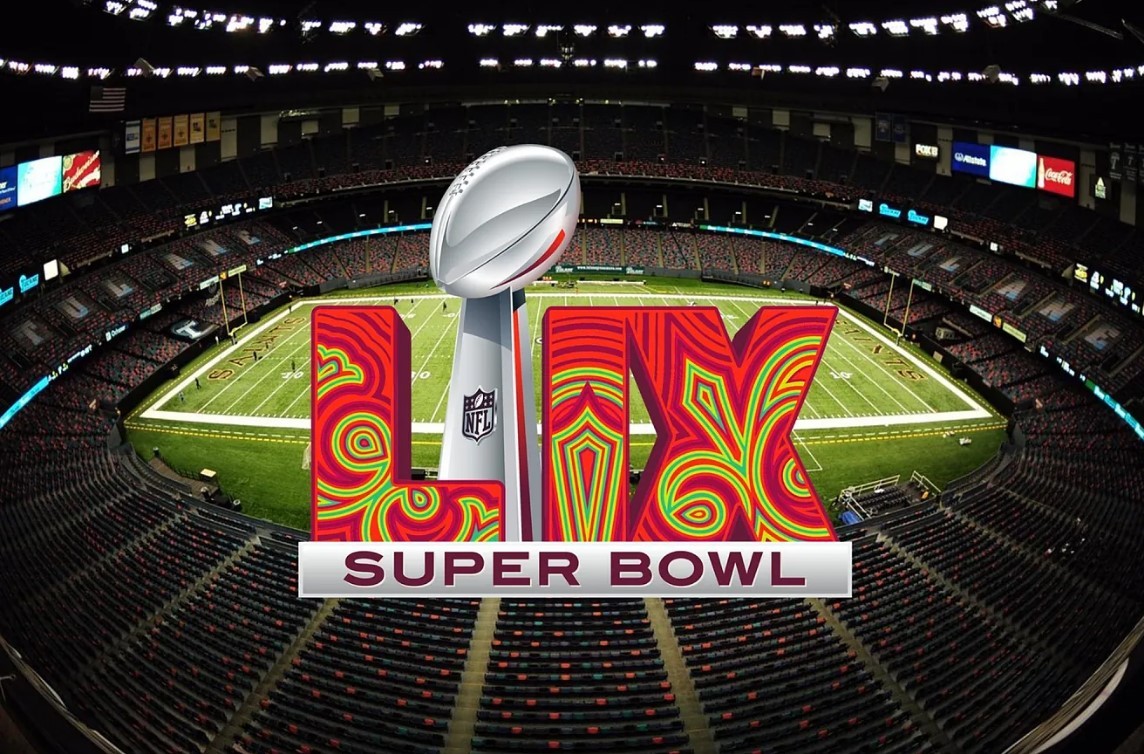Top 10 Largest Football (NFL) Stadiums in the US By Capacity and Square Footage
| Summary |
Football in the US, particularly American football, holds a unique and cherished place in the country's sporting landscape. It's not just a game; it's a cultural phenomenon that brings together millions of fans, communities, and generations. American football is one of the most popular sports in the United States. From the professional ranks of the NFL (National Football League) to college football and high school football, the sport captures the attention and passion of fans across the country.
Football has a significant cultural impact in the US, influencing everything from entertainment to commerce. The Super Bowl halftime show attracts millions of viewers and features performances by some of the biggest names in music. Additionally, football-related merchandise, apparel, and memorabilia are highly sought after by fans.
Football in the US intersects with various social issues, including discussions about player safety, concussion protocols, and the long-term health effects of playing the sport. The NFL and other organizations have implemented measures to address these concerns and promote player safety at all levels of the game.
Football in the US is more than just a sport; it's a shared experience that unites people from diverse backgrounds in their love for the game, its traditions, and the values it represents.
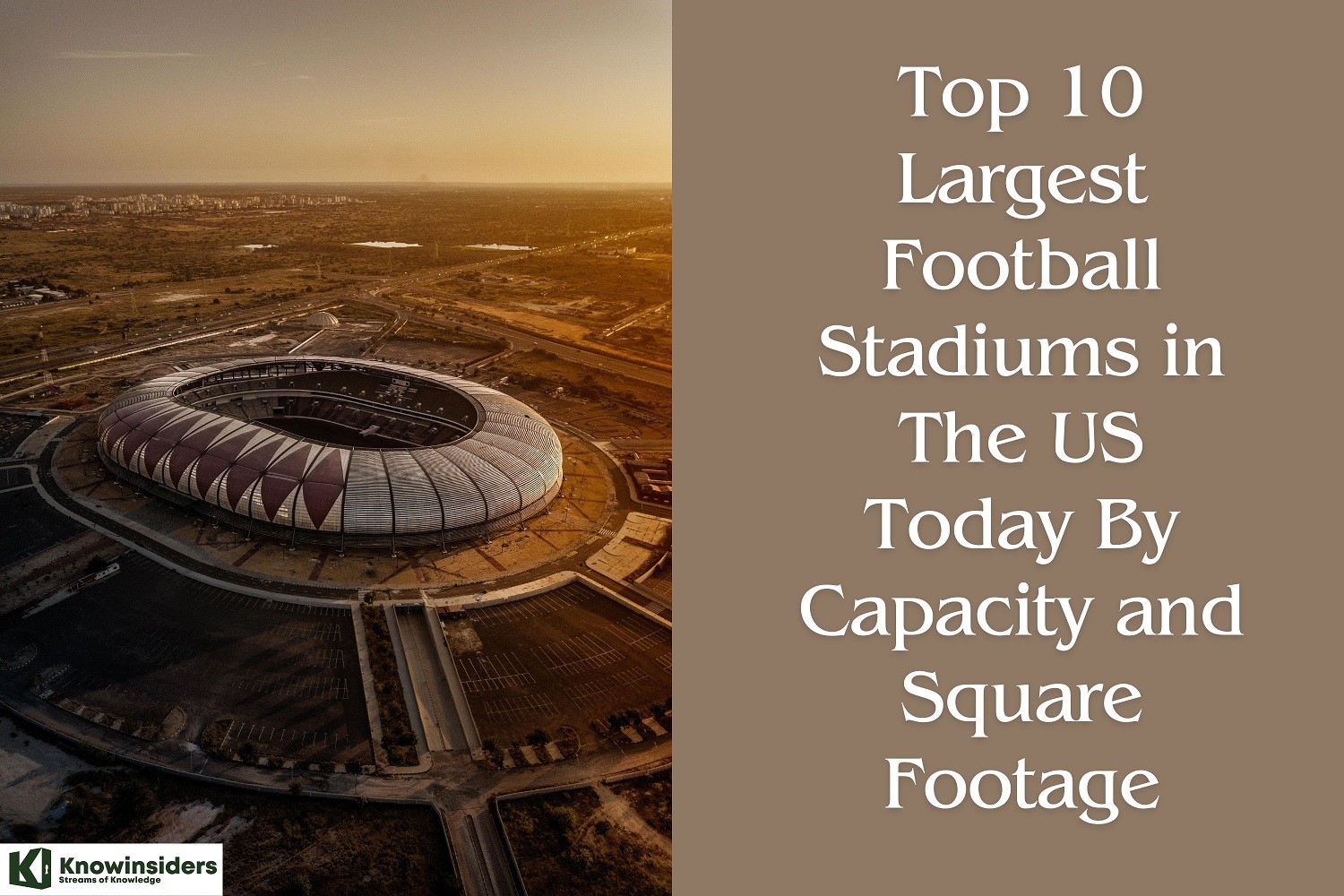 |
| Top 10 Largest Football Stadiums in The US Today By Capacity and Square Footage |
Overview: US Stadiums Capacity
When it comes to stadiums or venues, capacity is all about the maximum number of people that can be accommodated at any given time. The total capacity refers to the overall number of seats or standing-room spaces that are available for spectators, guests, or attendees.
The capacity of a venue is usually influenced by a range of factors. These factors include the venue's layout and design, adherence to safety regulations and codes, crowd management strategies, and the amenities and facilities that are available. The measurement typically includes the combined capacity of fixed seating areas, such as grandstands or bleachers, along with any standing room areas or temporary seating arrangements that are used for larger events.
When it comes to organizing events, managing sports teams, or running a facility, the capacity of a stadium or venue is a crucial factor to take into account. It has a direct impact on ticket sales, crowd control measures, and the overall experience of the guests. Calculating the maximum attendance for events is crucial in ensuring the venue can safely accommodate the anticipated number of spectators while adhering to regulations and safety standards.
Learn more: Top 9 Largest Stadiums In The World
Top 10 Largest Football Stadiums in The US By Capacity and Square Footage
1. Michigan Stadium (Ann Arbor, Michigan)
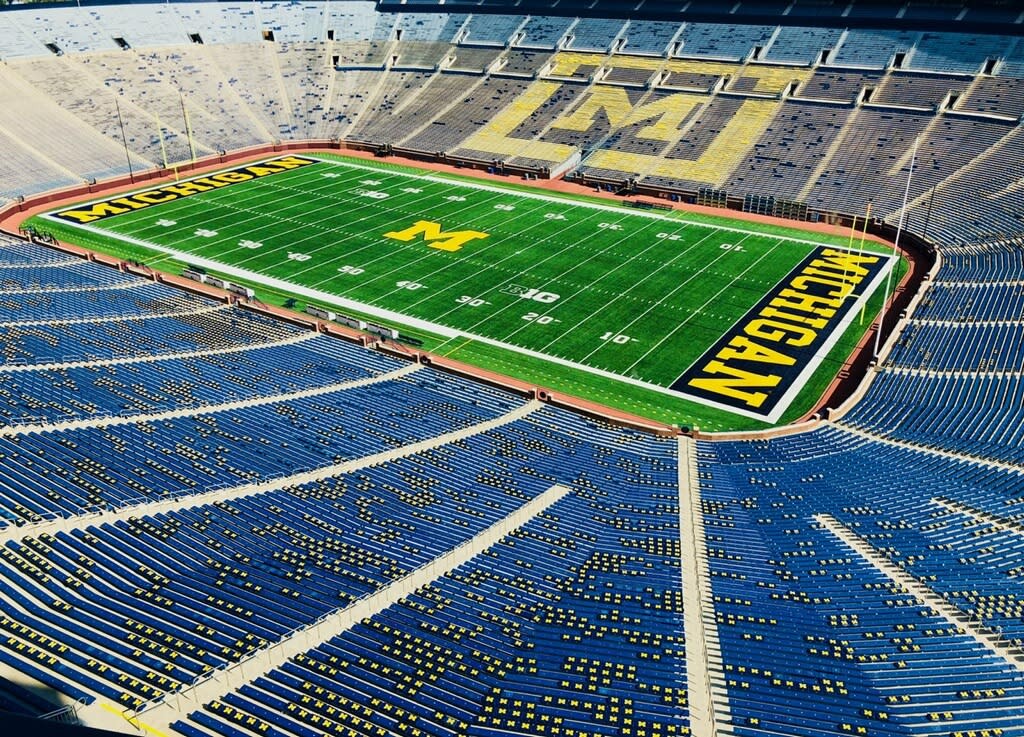 |
| Michigan Stadium |
Capacity: 107,601
Square Footage: 1,071,000
Michigan Stadium, also known as "The Big House," is a beloved landmark located in the heart of Ann Arbor, Michigan. Boasting an impressive capacity of 107,601, this stadium proudly claims the title of the largest football stadium in the United States. This massive structure, reminiscent of a formidable football fortress, commands attention with its impressive presence.
Michigan Stadium, originally built in 1927 for a whopping $950,000, has seen numerous expansions to meet the ever-increasing ticket demand. The unique bowl-shaped design guarantees that every seat provides a prime view of the action on the field, resulting in an unmatched atmosphere of excitement and camaraderie on game days.
Michigan Stadium is not just about its massive seating capacity. It also offers impressive amenities and facilities, such as state-of-the-art locker rooms, VIP suites, and premium seating options. The stadium exudes a palpable sense of history, with echoes of legendary victories and traditions cherished by generations of devoted fans found in every corner.
During game days, the stadium is filled with the deafening cheers of the crowd, adding to the excitement of every play and igniting the fierce determination of the Michigan Wolverines. Every game at Michigan Stadium is an unforgettable experience for players and spectators alike, whether it's the annual clash against arch-rivals or a thrilling conference showdown.
2. Beaver Stadium (State College, Pennsylvania)
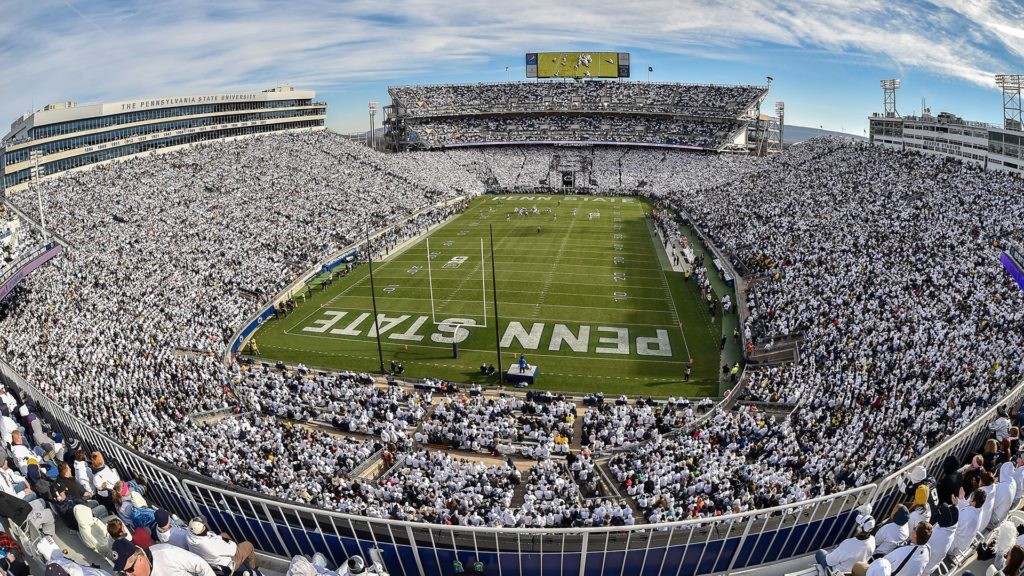 |
| Beaver Stadium |
Capacity: 106,572
Square Footage: 1,412,000
Located in the charming town of State College, Pennsylvania, Beaver Stadium is a magnificent representation of Penn State's rich history and unwavering spirit. With a seating capacity of 106,572, this football stadium is truly one of the largest and most respected in the country. It proudly stands as the heart of Nittany Lions football.
Beaver Stadium has seen numerous expansions since it was first opened in 1960, all in an effort to cater to the passionate fans who gather there on game days. The open horseshoe design provides a clear view of the field, ensuring an immersive experience for both spectators and players.
Beaver Stadium is famous for its massive size and the incredible energy that fills the air. The fans are known for their unwavering passion and dedication. The annual tradition at Penn State, known as "The Whiteout," sees fans donning white attire for a designated game. This transforms the stadium into a mesmerizing sea of white, creating an electrifying atmosphere that reverberates throughout State College.
The rich history of Beaver Stadium is deeply intertwined with the legacy of Penn State football, filled with numerous unforgettable moments and victories. With every game played within its walls, the legacy of this place grows even stronger. It has become a sacred shrine of college football, with each victory and rivalry etching another chapter in its storied history.
3. Ohio Stadium (Columbus, Ohio)
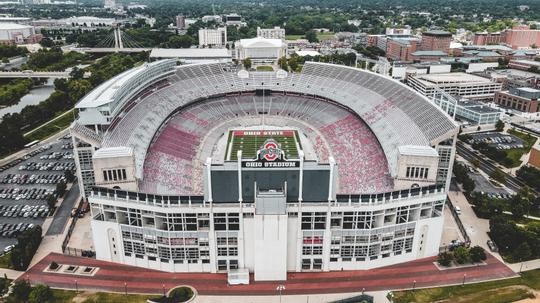 |
| Ohio Stadium |
Capacity: 102,780
Square Footage: 1,104,000
Ohio Stadium, also known as "The Horseshoe," is a beloved landmark that represents the deep-rooted pride and rich traditions of the Buckeyes in Columbus, Ohio. Boasting an impressive seating capacity of 102,780, this colossal football stadium stands as one of the largest and most renowned in the nation. It proudly serves as the cherished home turf for the Ohio State Buckeyes.
Built in 1922 with a price tag of $1.3 million, Ohio Stadium has seen numerous upgrades and expansions to meet the ever-increasing needs of its dedicated supporters. The unique horseshoe-shaped design of this venue, drawing inspiration from ancient Greek amphitheaters, guarantees excellent sightlines and acoustics, resulting in an unparalleled experience on game day.
Ohio Stadium is not just a magnificent architectural marvel, but also a place that is rich in tradition and history. Each game is a thrilling showcase of Buckeye pride and unity, from the iconic Script Ohio formation performed by The Ohio State University Marching Band to the raucous chants of "O-H-I-O" that echo throughout the stands.
Ohio Stadium has witnessed countless iconic moments and epic showdowns, establishing itself as a revered sanctuary of college football. The atmosphere inside The Horseshoe is always charged with electricity, driven by the unwavering passion of Buckeye Nation, whether it's the annual showdown against arch-rivals or a high-stakes conference clash.
4. Kyle Field (College Station, Texas)
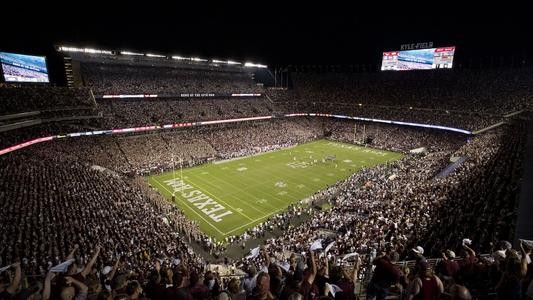 |
| Kyle Field |
Capacity: 102,733
Square Footage: 1,166,000
Situated in the heart of College Station, Texas, Kyle Field is a legendary symbol of Texas A&M University's storied football legacy. Boasting a massive seating capacity of 102,733, this stadium is truly one of the largest in the United States. It proudly serves as the home turf for the Texas A&M Aggies.
Constructed in 1927, Kyle Field has seen numerous renovations and expansions over the years to cater to the dedicated fan base that gathers on game days. The unique horseshoe-shaped architecture, reminiscent of iconic football arenas, provides clear sightlines of the field, resulting in an immersive atmosphere for both fans and athletes.
Kyle Field is widely recognized for its impressive size and the vibrant energy it exudes, along with its rich traditions that add to the overall experience. Each game is a thrilling display of Aggie pride and camaraderie, with raucous chants of "Gig 'em, Aggies!" and the iconic Aggie War Hymn performed by the Fightin' Texas Aggie Band.
The history of Kyle Field is filled with numerous unforgettable moments and victories, establishing its reputation as a revered sanctuary of college football. The unwavering passion of the fans is what fuels the electric atmosphere inside Kyle Field. Whether it's the annual clash against arch-rivals or a high-stakes conference showdown, the energy is palpable.
5. Tiger Stadium (Baton Rouge, Louisiana)
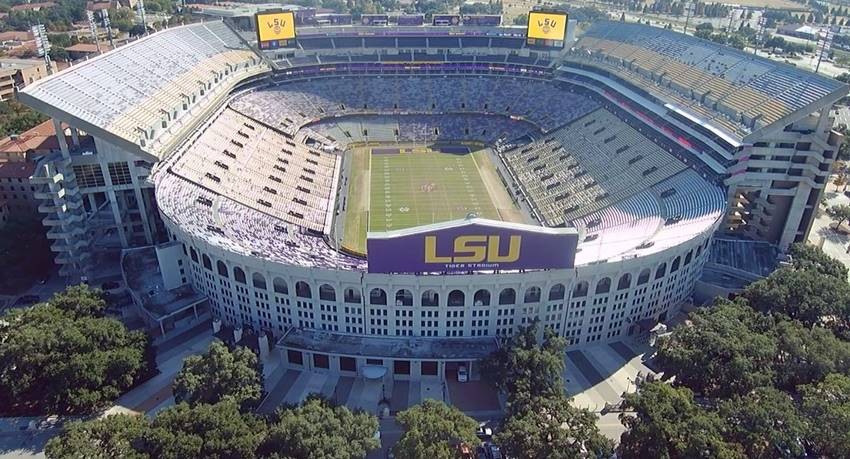 |
| Tiger Stadium |
Capacity: 102,321
Square Footage: 1,600,000
Tiger Stadium, located on the campus of Louisiana State University in Baton Rouge, Louisiana, is a legendary symbol of LSU football greatness. Boasting a massive seating capacity of 102,321, this stadium stands tall as one of the largest and most renowned in the country. It proudly holds the title of the legendary home of the LSU Tigers.
Tiger Stadium, originally built in 1924, has seen numerous renovations and expansions over the years to cater to the passionate fans who flock to its revered grounds on game days. The unique bowl-shaped design of the stadium, famously referred to as "Death Valley" due to its imposing atmosphere, enhances the deafening noise of the crowd, providing the Tigers with a formidable home-field advantage.
Tiger Stadium is not just a magnificent architectural marvel, but also a place that is rich in tradition and legendary stories. Every game at LSU is a true spectacle, with the electrifying pre-game ritual of "Callin' Baton Rouge" and the thunderous chants of "Geaux Tigers." It's a powerful display of the unwavering spirit that LSU fans bring to every match.
Tiger Stadium is steeped in history, having hosted numerous iconic moments and epic showdowns, solidifying its reputation as a hallowed ground in the realm of college football. Whether it's for the yearly showdown against SEC rivals or a national championship game, the energy inside Death Valley is always electric thanks to Tiger Nation's fervent support.
Read More: How To Watch College Football Playoff 2024 and Full Schedule
6. Neyland Stadium (Knoxville, Tennessee)
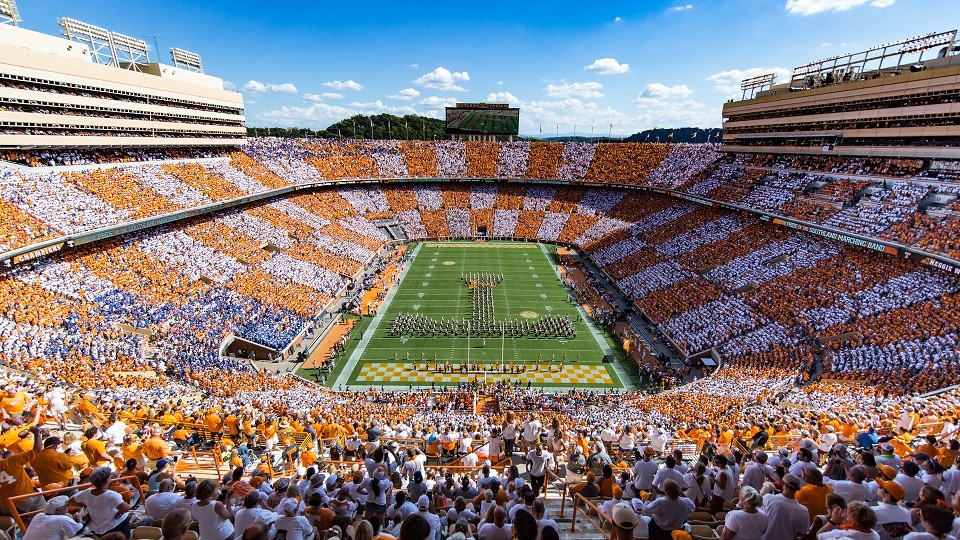 |
| Neyland Stadium |
Capacity: 102,455
Square Footage: 1,004,000
Situated on the banks of the Tennessee River in Knoxville, Neyland Stadium proudly represents the rich football tradition of the University of Tennessee. Boasting a seating capacity of 102,455, this colossal stadium stands tall among the nation's largest, proudly serving as the cherished home of the Tennessee Volunteers.
The stadium, originally built in 1921 and later named after the renowned coach Robert Neyland, has seen numerous renovations and expansions over the years to cater to the devoted fan base that flocks to its revered grounds on game days. The unique horseshoe-shaped layout provides excellent views and sound quality, ensuring an immersive experience for both the audience and athletes.
Neyland Stadium is famous for its impressive size and the incredible energy that fills the air during games. The stadium is also known for its rich traditions that add to the excitement of the experience. Every game is a testament to the unwavering pride and camaraderie of the Volunteers, with the Tennessee River filled with the iconic "Volunteer Navy" sailgating and the resounding chants of "Rocky Top" reverberating throughout the stands.
The history of Neyland Stadium is brimming with unforgettable moments and victories, cementing its reputation as a revered sanctuary of college football. The unwavering passion of the Volunteer faithful fuels the truly electric atmosphere inside Neyland Stadium. Whether it's the annual clash against SEC rivals or a historic rivalry showdown, the excitement is palpable.
7. Darrell K Royal-Texas Memorial Stadium (Austin, Texas)
 |
| Darrell K Royal-Texas Memorial Stadium |
Capacity: 100,119
Square Footage: 1,500,000
Located on the campus of the University of Texas at Austin, Darrell K Royal-Texas Memorial Stadium stands as an enduring symbol of Longhorn football tradition. With a seating capacity of 100,119, it ranks among the largest stadiums in the nation, serving as the iconic home of the Texas Longhorns.
The stadium, originally built in 1924 and later named after the renowned coach Darrell K Royal, has seen numerous renovations and expansions over the years to cater to the dedicated fan base that flocks to its revered grounds on game days. The unique bowl-shaped design of this venue provides excellent sightlines and acoustics, ensuring an immersive experience for both spectators and players.
Darrell K Royal-Texas Memorial Stadium is not just a magnificent architectural marvel, but also a place rich with tradition and stories. With the iconic "Hook 'em Horns" hand gesture and the electrifying energy of the Texas Fight song, every game showcases the unyielding spirit of Longhorn pride.
The stadium has seen numerous iconic moments and legendary games, solidifying its reputation as one of the most respected arenas in college football. The atmosphere inside Darrell K Royal-Texas Memorial Stadium is always electric, whether it's the annual showdown against arch-rivals or a high-stakes conference clash. The unyielding passion of Longhorn Nation fuels the excitement and adds to the intensity of the game.
8. MetLife Stadium (East Rutherford, New Jersey)
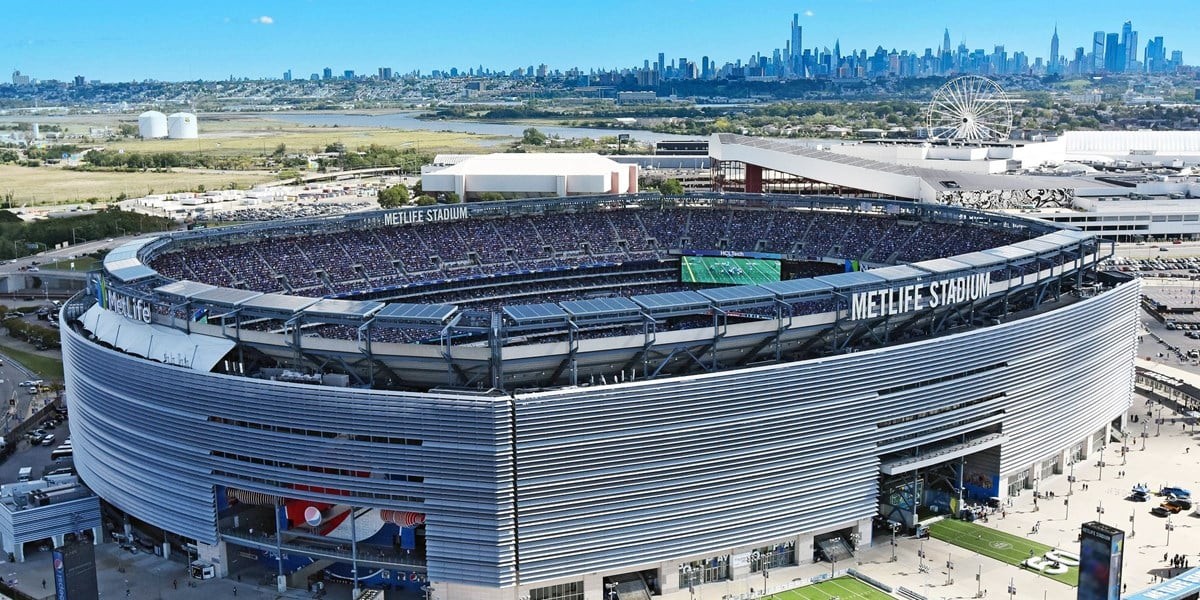 |
| MetLife Stadium |
Capacity: 82,500
Square Footage: 2,100,000
MetLife Stadium in East Rutherford, New Jersey, is a modern sports and entertainment marvel. One of the few NFL stadiums to host two teams, it seats 82,500 and hosts the New York Giants and Jets.
MetLife Stadium, opened in 2010, is a model of modern stadium design and technology. From football games to concerts and international soccer matches, its sleek, modern architecture with its asymmetrical form and metal exterior makes a striking backdrop.
MetLife Stadium offers luxury suites and premium amenities beyond its sports venue status, giving guests unmatched comfort and entertainment. The stadium's configurable seating, retractable seating sections, and advanced LED lighting systems make spectators and performers feel immersed.
Major events and attractions are held at MetLife Stadium due to its central location in New York. From hosting Super Bowls and WrestleMania to headlining concerts with the biggest names in music, the stadium has become a Tri-State cultural landmark.
9. Rose Bowl (Pasadena, California)
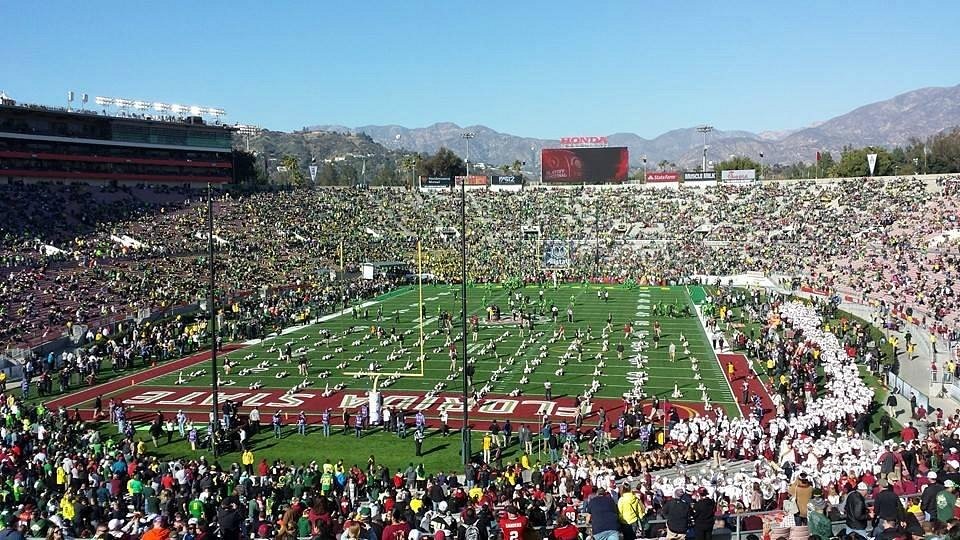 |
| Rose Bowl |
Capacity: 88,542
Square Footage: 1,300,000
Nestled in the picturesque city of Pasadena, California, the Rose Bowl Stadium stands as an enduring symbol of college football tradition and excellence. With a seating capacity of 88,542, it ranks among the largest and most iconic stadiums in the United States, serving as the historic home of the annual Rose Bowl Game.
Opened in 1922, the Rose Bowl Stadium boasts a rich history steeped in tradition and pageantry. Its distinctive bowl-shaped design and iconic Arroyo Seco location provide a breathtaking backdrop for some of the most memorable moments in college football history.
Beyond its role as a premier venue for college football, the Rose Bowl Stadium has played host to a wide range of events, including Super Bowls, FIFA World Cup matches, and Olympic competitions. Its lush green field and majestic surroundings make it a favorite destination for fans and athletes alike.
The Rose Bowl Game, held annually on New Year's Day, is one of the most prestigious events in college football, attracting teams from across the country to compete for the coveted Rose Bowl Trophy. The stadium's festive atmosphere, highlighted by the Tournament of Roses Parade and pre-game festivities, creates an unforgettable experience for players and spectators alike.
10. AT&T Stadium (Arlington, Texas)
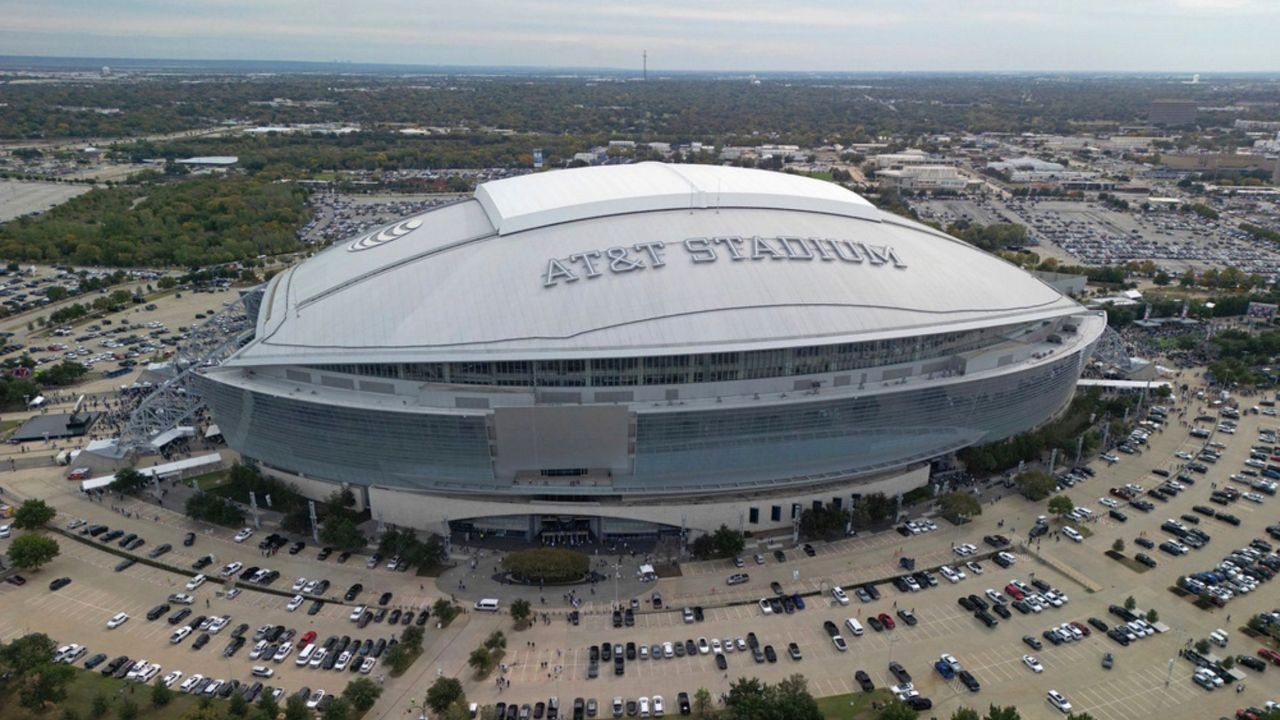 |
| AT&T Stadium |
Capacity: 80,000
Square Footage: 3,000,000
Located in Arlington, Texas, AT&T Stadium stands as a towering monument to sports and entertainment. With a seating capacity of 80,000, expandable to 105,000 for special events, it ranks among the largest stadiums in the world, serving as the home of the Dallas Cowboys and a premier venue for concerts, conventions, and other major events.
Opened in 2009, AT&T Stadium is renowned for its innovative design and state-of-the-art amenities. Its striking architecture, featuring a retractable roof and expansive glass walls, creates a stunning visual spectacle both day and night. Inside, guests are treated to an array of luxury suites, high-definition video displays, and premium dining options, setting a new standard for the fan experience.
Beyond its role as a sports venue, AT&T Stadium has hosted numerous marquee events, including Super Bowls, NCAA Final Four tournaments, and world-class concerts featuring top artists from around the globe. Its central location in the Dallas-Fort Worth metroplex makes it a magnet for fans and visitors alike, drawing crowds from across the region and beyond.
AT&T Stadium's signature event, the Dallas Cowboys' home games, is a spectacle unto itself, marked by the iconic Cowboys cheerleaders, halftime performances, and the electrifying atmosphere of game day. Whether it's cheering on the home team or attending a blockbuster concert, guests at AT&T Stadium are guaranteed an unforgettable experience that transcends the boundaries of sports and entertainment.
Conclusion
The grandiose stadiums not only host exhilarating matches but also represent the nation's passionate adoration for football.
These impressive venues leave a lasting impression on fans all over the nation, creating unforgettable moments that will be cherished forever.
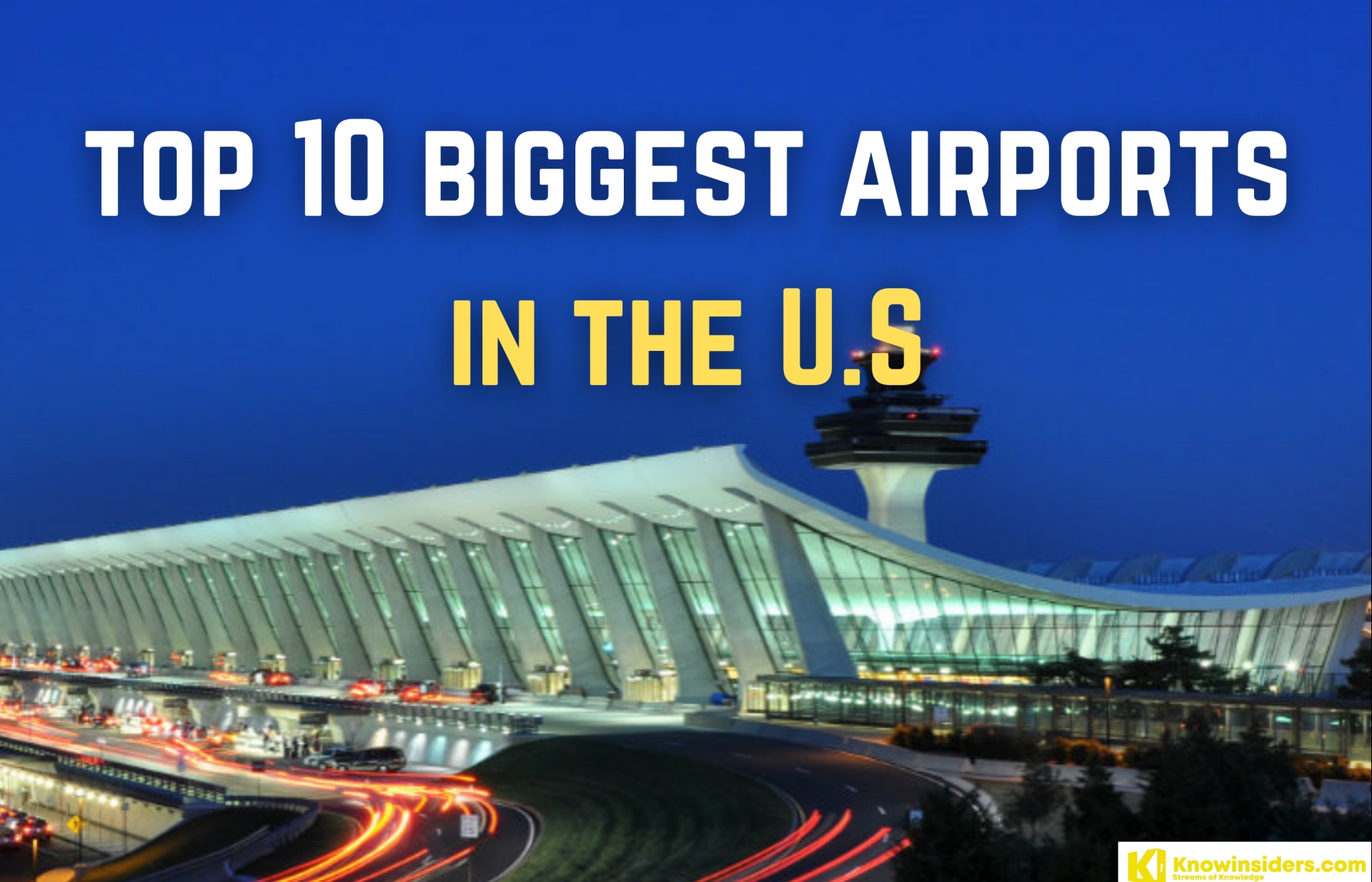 Top 10 Largest Airports in the US by Area - 2024 Report Top 10 Largest Airports in the US by Area - 2024 Report The United States of America has the most airports, accounting for one-third of all world’s airports. The country and its territories have over 19,000 airports, ... |
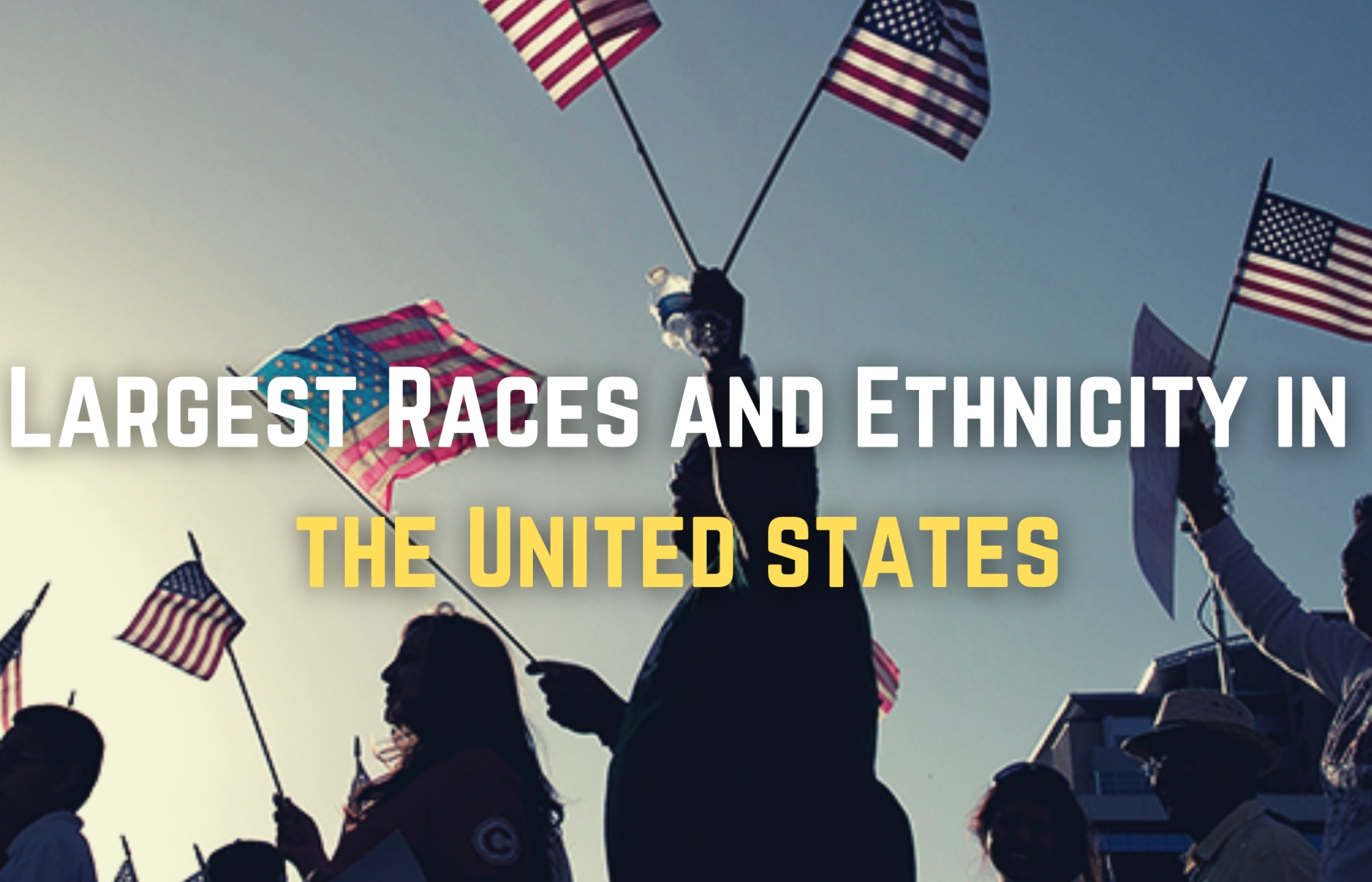 What are the Largest Ethnic Groups in the US Today What are the Largest Ethnic Groups in the US Today The United States is a multicultural country with a history of attempts to monopolize privilege, power, and wealth for White people. Discover the races and ... |
 Top 15 Largest Grocery Chains in the US Today Top 15 Largest Grocery Chains in the US Today Grocery chains feed millions and generate significant revenue in the vast and ever-expanding American retail landscape. Here, we examine the top 15 US grocery chains' ... |
 Top 10 Largest Airlines in the US by Passengers Top 10 Largest Airlines in the US by Passengers The US airline industry has grown and competed in 2024 as air travel recovers from the pandemic. The top 10 largest airlines in the country ... |

